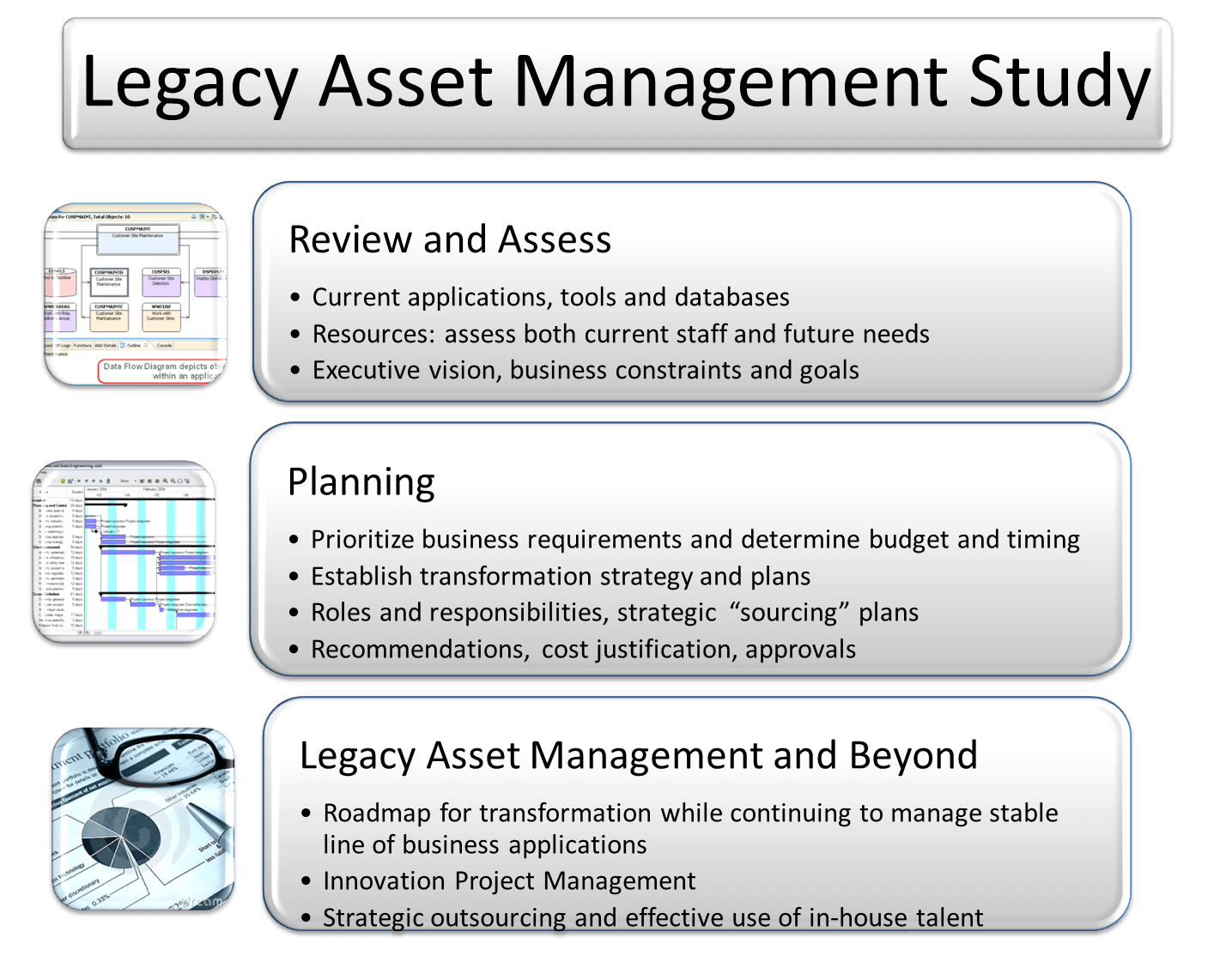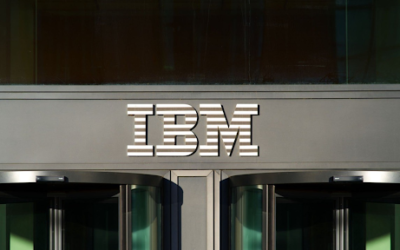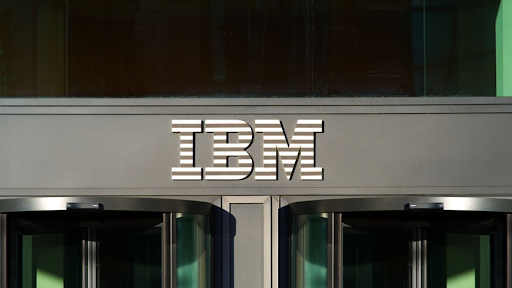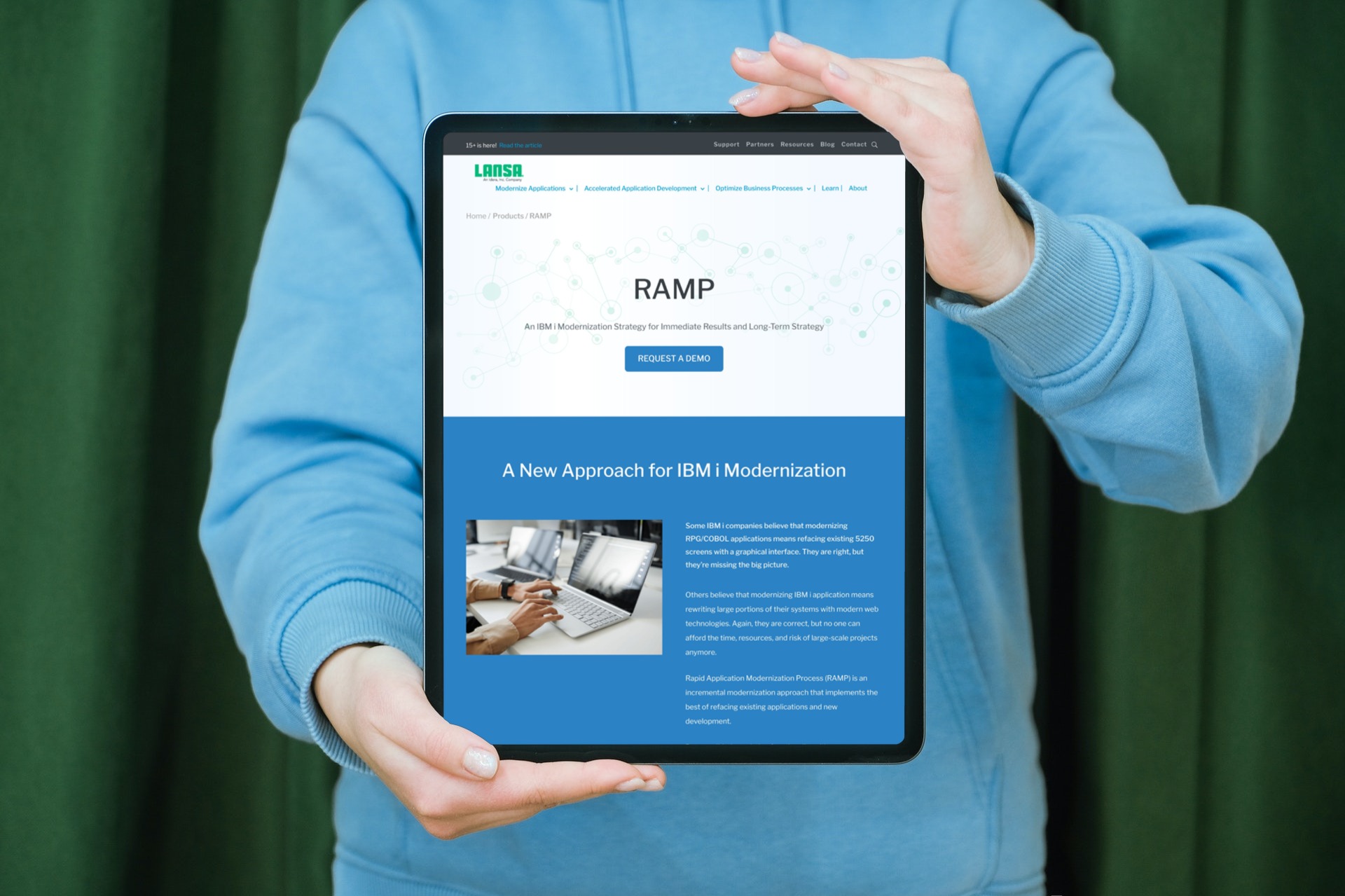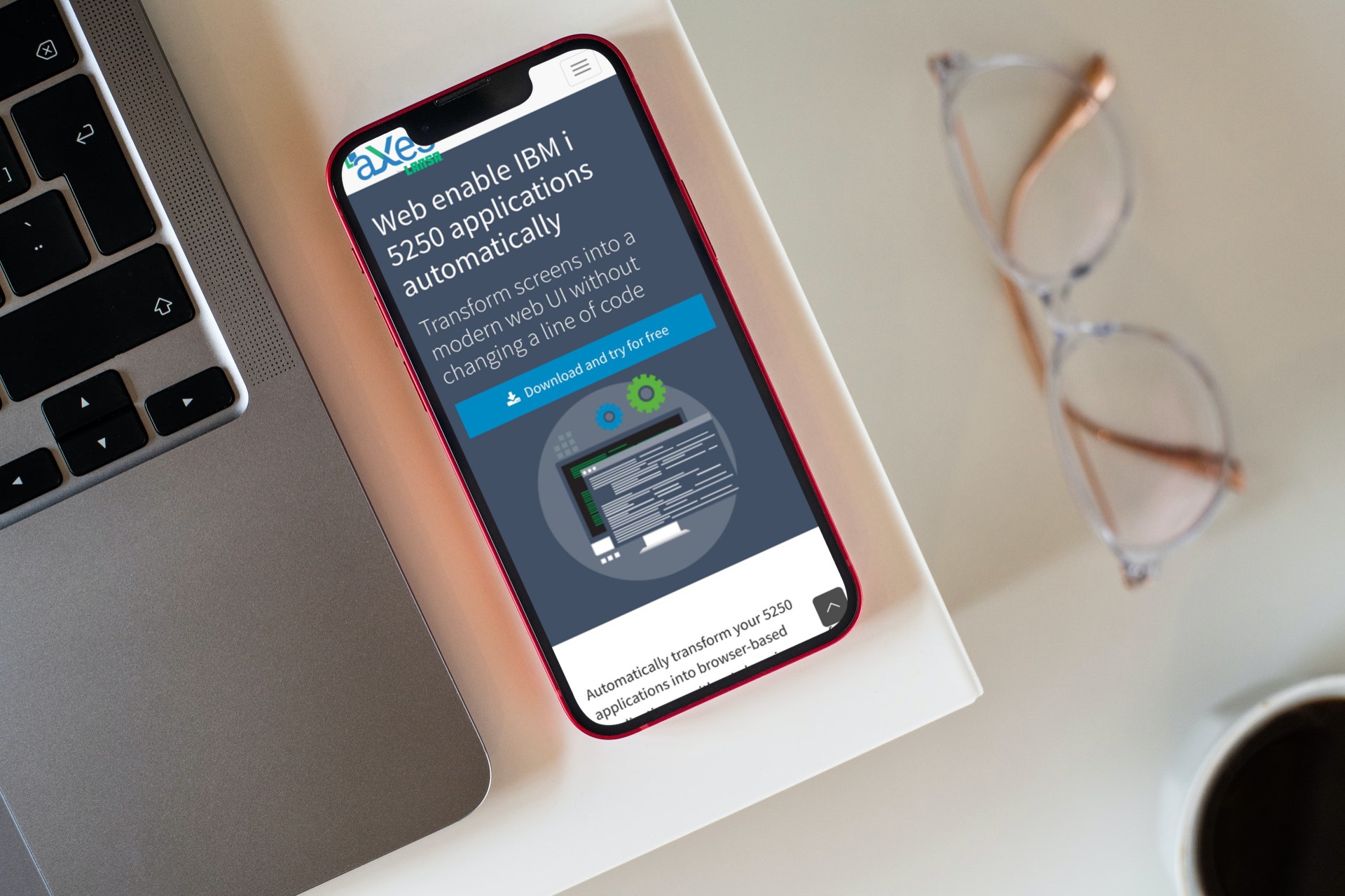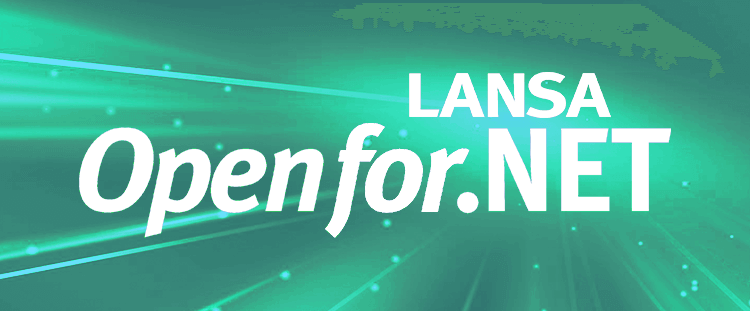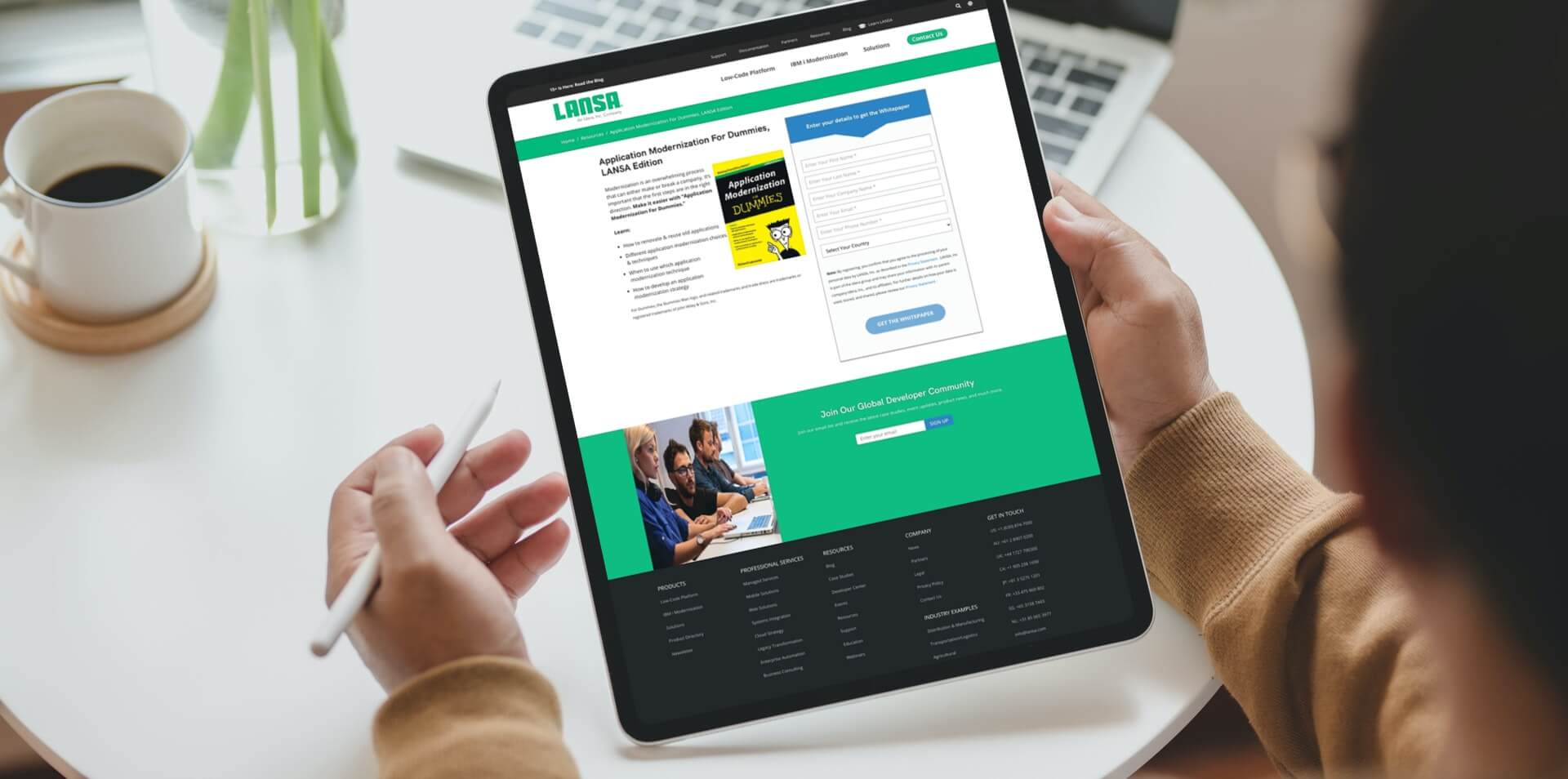Legacy Asset Management and Transformation is the practice of maintaining older application assets so that you can continue to derive value from your stable line-of-business applications – while executing a plan to gradually transform and possibly even replace them. A common goal with this approach is to move forward in a cost-effective, low-risk fashion.
Many IT organizations struggle to keep up with the demands of day-to-day maintenance and operations. In a survey of RPG development shops run by MC Press Online a couple of years ago, 65% said they missed maintenance deadlines annually. Meanwhile executives expect IT to not only maintain a stable business environment while reacting to frequent changes, but to also ensure the company stays competitive in their industry with eCommerce, web services/EDI, operational/business process improvements such as workflow, mobile solutions, social media integration and whatever comes next.
Although legacy applications may be born out of stagnation by maintaining the status quo (sometimes for decades) and not taking an application forward as technology and business progress into new areas, there are often solid business reasons why this has occurred. For example, lack of resources and budgetary constraints are often factors plus the legacy application may be uniquely suited to the business and difficult to replace. So while doing nothing will be detrimental over time, there may also be reluctance to take any significant steps to change and possibly destabilize the mission-critical systems.
If your IT shop has been consumed with managing a legacy environment and day-to-day operations such that there has been little time or budget for innovation and improvements, you will benefit from building a plan for Legacy Management and Transformation to ensure that your business remains competitive in the rapidly changing world of technological advancements affecting commerce today.
Drivers for transformation
Many organizations are managing legacy applications that have grown over many years along with the business. These legacy applications may encapsulate the unique capabilities and processes of the business – which can make them difficult to replace. Architected using older design patterns, they do not easily allow componentization and reuse.
 Modernization and transformation is a popular topic today and can mean many things, especially if you’re talking to different software vendors with different approaches to modernizing legacy systems. The challenge that many IT Managers face is whether to evolve and modernize their applications while bolting on new technology solutions to satisfy their business executives, or whether a “rip and replace”/ “big bang” approach to replace or convert their old applications is advisable.
Modernization and transformation is a popular topic today and can mean many things, especially if you’re talking to different software vendors with different approaches to modernizing legacy systems. The challenge that many IT Managers face is whether to evolve and modernize their applications while bolting on new technology solutions to satisfy their business executives, or whether a “rip and replace”/ “big bang” approach to replace or convert their old applications is advisable.
From the perspective of Information Technology, the primary requirements for transforming legacy systems might be:
- The ability to deliver applications to users via current interfaces and devices, such as web, Windows, mobile with social media integration and whatever comes next
- A modern application architecture – ensuring componentization, reuse of logic and centralized business rules and service-oriented access to key business functions

- Providing online interfaces for customers and partners to transact business directly with in-house systems
- Mobility access to some subset of functionality for the roaming workforce
- Increasing productivity via improved processing, workflow and access to information
- Electronic interchange solutions, often conforming to industry standards or governance
- Improved quality of customer- and supply-chain interactions through advanced technology
- Executive information and analysis
Information Technology’s challenge is that the business may only provide budget or requests when specific needs arise, whereas a CIO must anticipate what those needs might be and proactively prepare the systems’ landscape so the application architecture and tools are in place to deliver.
The Options
Identifying your technology and business drivers for transformation is required so that you can enroll the rest of your organization in the plan. Commitment and alignment among everyone involved for the challenging – and sometimes costly – road ahead is crucial. As a leader in technology within your company, you will also benefit from building a cost benefit analysis for your plan.
A number of factors such as the commitment within your organization, your business priorities and the current state of your enterprise systems will help you to determine the direction to take on your journey to Legacy Transformation. 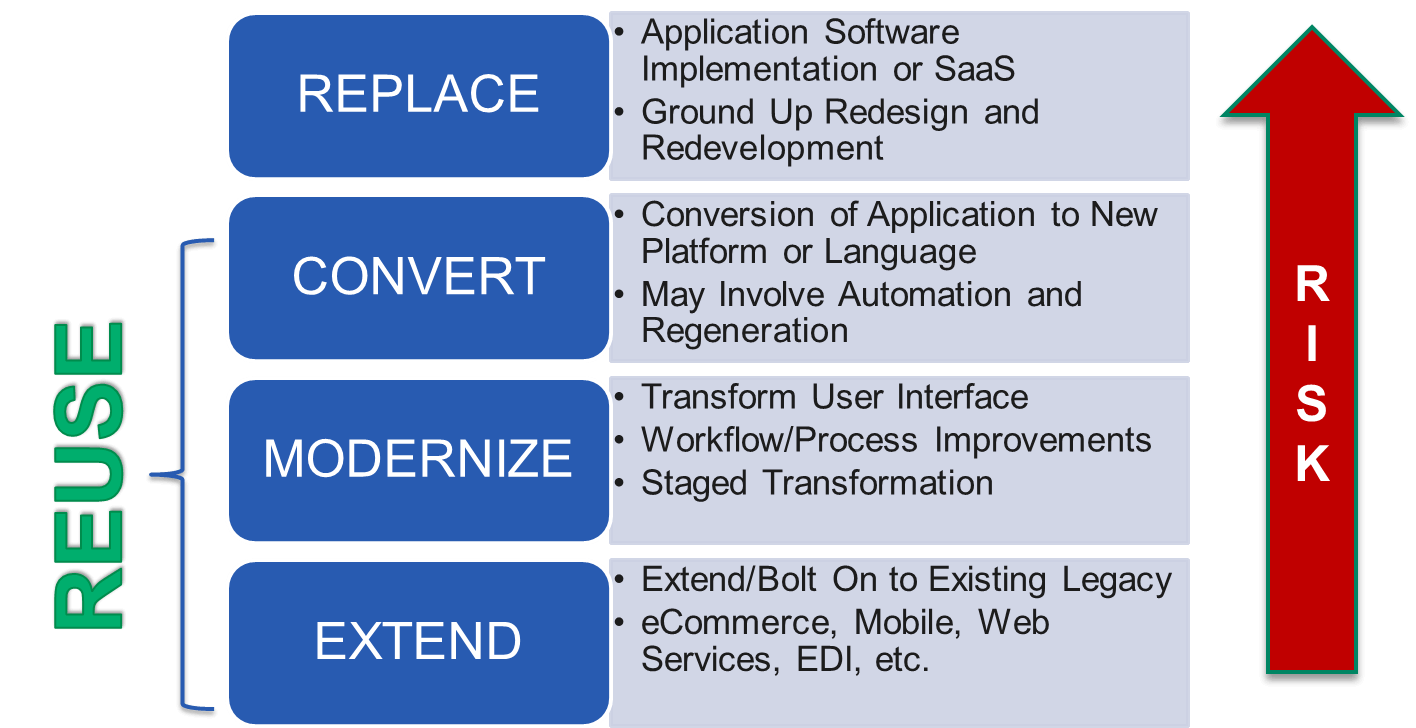
If you have both the mandate and the budget to replace your legacy systems then you may be evaluating some large scale replacement options. In other words, you may be considering a “rip and replace” or “big bang” approach to transformation — which is higher risk than evolutionary transformation. This may involve implementing COTS (Commercial off-the-shelf) software or full-scale redevelopment.
In some cases legacy application conversion might be an option, but one that should be considered with care. This involves taking a legacy application and converting it over to a newer technology, platform, or language while preserving the information structures and the basic logic, UI and navigation of the original application. Performing conversion may involve the use of automated tools for partial or full translation of code, screens, or database – or it may involve use of low cost (offshore) resources for heads down “replication coding.” Aside from the technical challenges of accomplishing the conversion, you must consider that you’re taking an older paradigm for application development and replicating in a new technology. In this scenario, you would usually reserve any improvements or new functionality until the application is safely migrated to the new environment. Depending on the amount of effort this will require, you may be better off with a transformation approach that involves gradual redesign and implementation of “extended” solutions to provide the business with the leading edge capabilities it’s demanding.
If you have limited budget or are more risk-averse and prefer “evolution” over “revolution,” you will likely be more comfortable with transforming your legacy system in stages towards a brave new world. A good first step to satisfy users while you continue on your transformation mission often involves refacing the application with a graphical user interface against the existing back-end legacy system. Enhancing an application refacing project to include workflow processing can significantly increase the Return on Investment with your first modernization effort. The Beacon Insurance Company is a good example of effective workflow integration over an insurance legacy system.
In many cases, first transformation projects are triggered by urgent business needs to extend enterprise systems and offer new services – such as eCommerce or initiatives like Global Data Synchronization (GDS), EDI or mobile apps. In these situations, the required solutions will typically be implemented using different technologies than the legacy system and integrated via database access or service-level calls into the application. As these projects do not usually require changes to the core legacy environment, there is low risk to the line-of-business systems.
Another consideration for Legacy Asset Management is outsourcing. This can involve transferring your entire legacy application to a server at a third- party location or to the cloud. Or, you may just want to consider outsourcing the mundane maintenance activity with your legacy system to an organization with offshore resources, so that your core IT team can focus on transformation and higher priority tasks. This division of labor could both save costs and enable you to more effectively move forward with your plans.
Take a step back and learn about the changes that the IBM i OS versions have seen over the decades in this guide.
Getting Started
Assessing your current enterprise application portfolio is an important first step in formulating your plan for transformation. Many legacy applications do not have good documentation and the knowledge of how the systems have evolved is primarily in the heads of the IT experts that manage the systems. To get started, a Legacy Asset Management Study is a good way to take stock of what you’ve got and where you need to go so you can plot out the best approach to get there. In a future post, we will get into more detail on how to build this plan.
Imagine the Possibilities
By leveraging your existing application assets while building for the future, you can begin to take advantage of more modern capabilities and design paradigms. With a strong game plan for transformation, your business can enjoy a return on your investment with innovative solutions.
Imagine a future where:
- Business priorities are always delivered by IT because systems, processes and staff are
nimbleandeasilyadaptable to change
- Your organization is the first of your competitors to deploy the latest in eCommerce or supply-chain innovation to your customers
- Your business operations are efficient, automated and agile
As Paul Conte said in Book 1 of his eBook Trilogy Transforming IBM i Applications – Your Journey Beyond Modernization, “Agility, productivity and reliability are the hallmarks of ‘new generation’ applications.”


